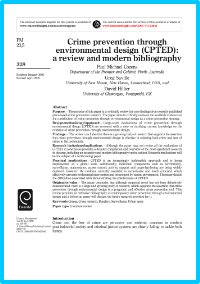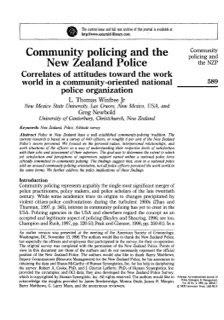By: Paul Michael Cozens, Greg Saville, and David Hillier
Purpose – The purpose of this paper is to critically review the core findings from recently published place-based crime prevention research. The paper aims to critically evaluate the available evidence on the contribution of crime prevention through environmental design as a crime prevention strategy.
Design/methodology/approach – Large-scale evaluations of crime prevention through environmental design (CPTED) are reviewed with a view to clarifying current knowledge on the evidence of crime prevention through environmental design.
Findings – The review concludes that there is a growing body of research that supports the assertion that crime prevention through environmental design is effective in reducing both crime and fear of crime in the community.
Research limitations/implications – Although the paper may not review all the evaluations of CPTED, it nonetheless provides a detailed compilation and overview of the most significant research in the area, including an extensive and modern bibliography on the subject. Research implications will be the subject of a forthcoming paper.
Practical implications – CPTED is an increasingly fashionable approach and is being implemented on a global scale. Additionally, individual components such as territoriality, surveillance, maintenance, access control, activity support and target-hardening are being widely deployed. However, the evidence currently available is inconclusive and much criticised, which effectively prevents widespread intervention and investment by central government. The paper details the difficulties associated with demonstrating the effectiveness of CPTED.
Originality/value – The paper concludes that although empirical proof has not been definitively demonstrated, there is a large and growing body of research, which supports the assertion that crime prevention through environmental design is a pragmatic and effective crime prevention tool. This review provides an extensive bibliography of contemporary crime prevention through environmental design and a follow-up paper will discuss the future research priorities for it.
Property Management Vol. 23 No. 5, 2005 pp. 328-356





















